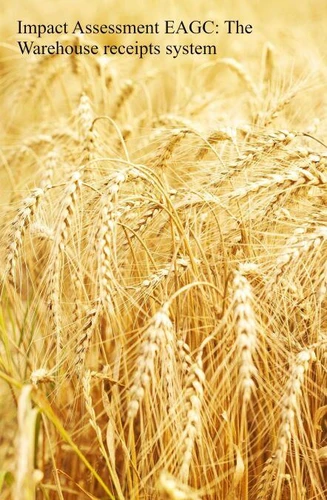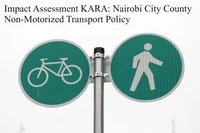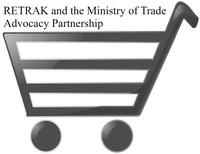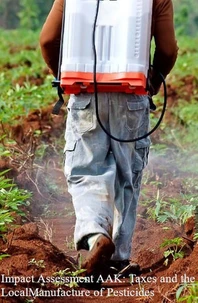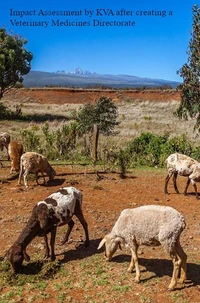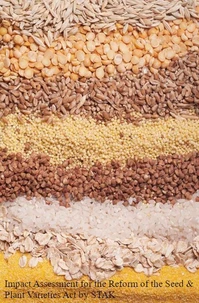Impact Assessment EAGC: The Warehouse Receipts System
Par :Formats :
Disponible dans votre compte client Decitre ou Furet du Nord dès validation de votre commande. Le format ePub protégé est :
- Compatible avec une lecture sur My Vivlio (smartphone, tablette, ordinateur)
- Compatible avec une lecture sur liseuses Vivlio
- Pour les liseuses autres que Vivlio, vous devez utiliser le logiciel Adobe Digital Edition. Non compatible avec la lecture sur les liseuses Kindle, Remarkable et Sony
- Non compatible avec un achat hors France métropolitaine
 , qui est-ce ?
, qui est-ce ?Notre partenaire de plateforme de lecture numérique où vous retrouverez l'ensemble de vos ebooks gratuitement
Pour en savoir plus sur nos ebooks, consultez notre aide en ligne ici
- FormatePub
- ISBN8201474522
- EAN9798201474522
- Date de parution25/02/2022
- Protection num.Adobe DRM
- Infos supplémentairesepub
- ÉditeurJL
Résumé
The East African Grain Council (EAGC) is a membership-based organisation for the grain sector in 10 countries in Eastern and Southern Africa (Kenya - Head Office, Tanzania, Uganda, Burundi, Rwanda, South Sudan, Ethiopia, DR Congo, Zambia and Malawi). It has 470 members across the region with 200 from Kenya and was incorporated in 2006. EAGC has an advocacy strategy that is based on having a clear road map for all initiatives.
It is for this reason that the mission of EAGC is "to advocate for an enabling environment and promote structured grain trade for optimum stakeholder benefits like supporting domestic and cross-border grain trade in its mandate countries". The policy agenda for EAGC has been and continues to be, to ensure a continuous dialogue with policymakers to work together to find solutions to challenges in the sector, solutions that address the cross-cutting concerns and objectives of all stakeholders, including government, that would bring about safe, nutritious and affordable food grain commodities sustainably and inclusively.
The report shows how the Business Advocacy Fund made a point of attempting to assess the impact made by the EAGC and projects that it supported. In this particular case, a well-implemented warehouse system can reduce post-harvest losses and enhance farmers' ability to raise finance secured on produce not yet sold.
It is for this reason that the mission of EAGC is "to advocate for an enabling environment and promote structured grain trade for optimum stakeholder benefits like supporting domestic and cross-border grain trade in its mandate countries". The policy agenda for EAGC has been and continues to be, to ensure a continuous dialogue with policymakers to work together to find solutions to challenges in the sector, solutions that address the cross-cutting concerns and objectives of all stakeholders, including government, that would bring about safe, nutritious and affordable food grain commodities sustainably and inclusively.
The report shows how the Business Advocacy Fund made a point of attempting to assess the impact made by the EAGC and projects that it supported. In this particular case, a well-implemented warehouse system can reduce post-harvest losses and enhance farmers' ability to raise finance secured on produce not yet sold.
The East African Grain Council (EAGC) is a membership-based organisation for the grain sector in 10 countries in Eastern and Southern Africa (Kenya - Head Office, Tanzania, Uganda, Burundi, Rwanda, South Sudan, Ethiopia, DR Congo, Zambia and Malawi). It has 470 members across the region with 200 from Kenya and was incorporated in 2006. EAGC has an advocacy strategy that is based on having a clear road map for all initiatives.
It is for this reason that the mission of EAGC is "to advocate for an enabling environment and promote structured grain trade for optimum stakeholder benefits like supporting domestic and cross-border grain trade in its mandate countries". The policy agenda for EAGC has been and continues to be, to ensure a continuous dialogue with policymakers to work together to find solutions to challenges in the sector, solutions that address the cross-cutting concerns and objectives of all stakeholders, including government, that would bring about safe, nutritious and affordable food grain commodities sustainably and inclusively.
The report shows how the Business Advocacy Fund made a point of attempting to assess the impact made by the EAGC and projects that it supported. In this particular case, a well-implemented warehouse system can reduce post-harvest losses and enhance farmers' ability to raise finance secured on produce not yet sold.
It is for this reason that the mission of EAGC is "to advocate for an enabling environment and promote structured grain trade for optimum stakeholder benefits like supporting domestic and cross-border grain trade in its mandate countries". The policy agenda for EAGC has been and continues to be, to ensure a continuous dialogue with policymakers to work together to find solutions to challenges in the sector, solutions that address the cross-cutting concerns and objectives of all stakeholders, including government, that would bring about safe, nutritious and affordable food grain commodities sustainably and inclusively.
The report shows how the Business Advocacy Fund made a point of attempting to assess the impact made by the EAGC and projects that it supported. In this particular case, a well-implemented warehouse system can reduce post-harvest losses and enhance farmers' ability to raise finance secured on produce not yet sold.

